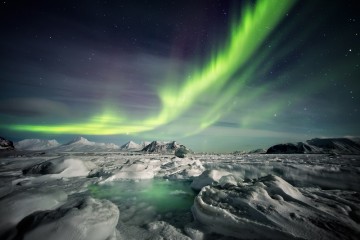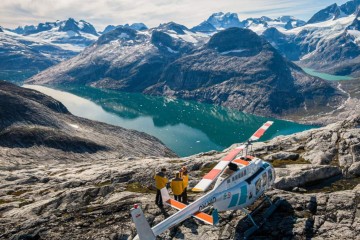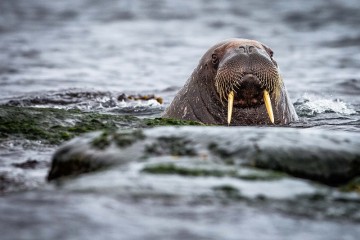The Arctic is one of the most extreme environments on earth and home to some of its most incredible and adaptable wildlife. Going on an Arctic cruise provides an extraordinary adventure and lets you see these fantastic creatures in the wild. Here's a look at ten animals that thrive in the Arctic and tips on where and when to see them during your expedition.
1. Polar Bear
Everyone who wishes to see wildlife in the Arctic, wants to see the polar bear, first and foremost!
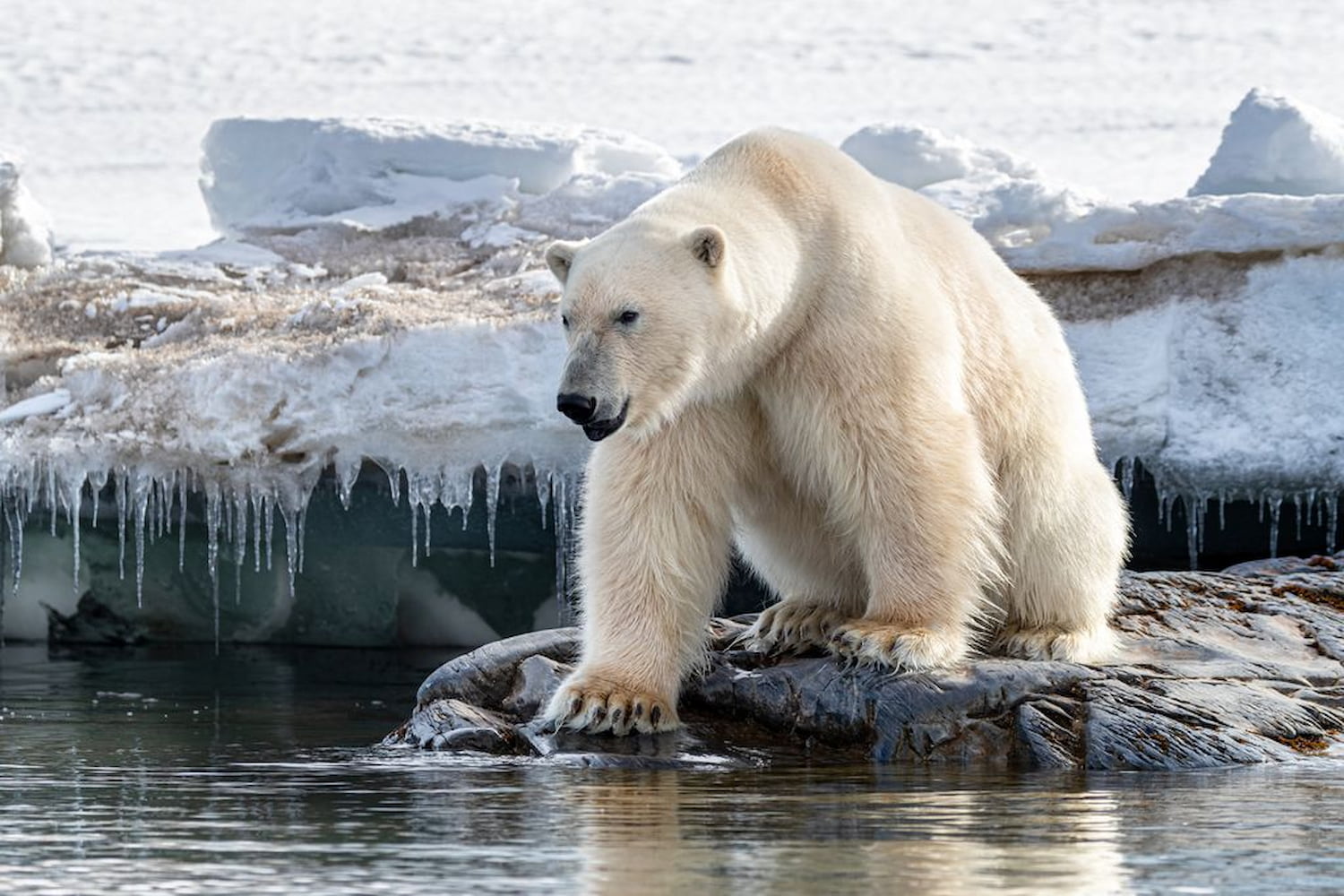
A glimpse of the Arctic’s most iconic resident.
The undisputed king of the Arctic and an apex predator without rivals (well, except humans), the Polar bear roams the sea ice hunting for seals, which make up the majority of its diet. These magnificent creatures are generally found along the coastlines of Svalbard, Greenland, and northern Canada. The best time to see them is during the summer, from June to September when the ice begins to melt, and they come closer to shore.
If you dream of seeing a polar bear in the wild, a cruise to the Svalbard archipelago offers one of the highest chances of spotting these incredible animals. Generally, though, the polar bear is still the most spotted Arctic wildlife on cruise expeditions to the north.
“If you dream of seeing a polar bear in the wild, then I recommend opting for an expedition cruise around Svalbard, and the longer the cruise, the more opportunities! On a two week Svalbard circumnavigation I was lucky enough to see 22 polar bears; some wandering the sea ice at a distance, sleeping on a rock, another hunting...all incredible experiences that I cherish.” - Tara Sutherland, Viva Operations Manager
Where to see them: Svalbard, Greenland, Wrangel Island & Franz Josef Land (Russia), Churchill & Nunavut (Canada).
"Nothing comes close to the excitement onboard, when the captain or one of the expedition team announce the sighting of a Polar bear! In Svalbard we were lucky on day two of our voyage to get close enough to watch a mother and her young cub along the shoreline, enjoying a feast of a freshly killed seal and then the mother cleaning herself meticulously – almost like a cat -and her young cub playing in the melting snow – an incredible sight which left us all in awe of these majestic creatures." - Rosemary McNoe, Business Development Manager
> Read more: Where to See Polar Bears on Arctic Cruises
2. Arctic Fox
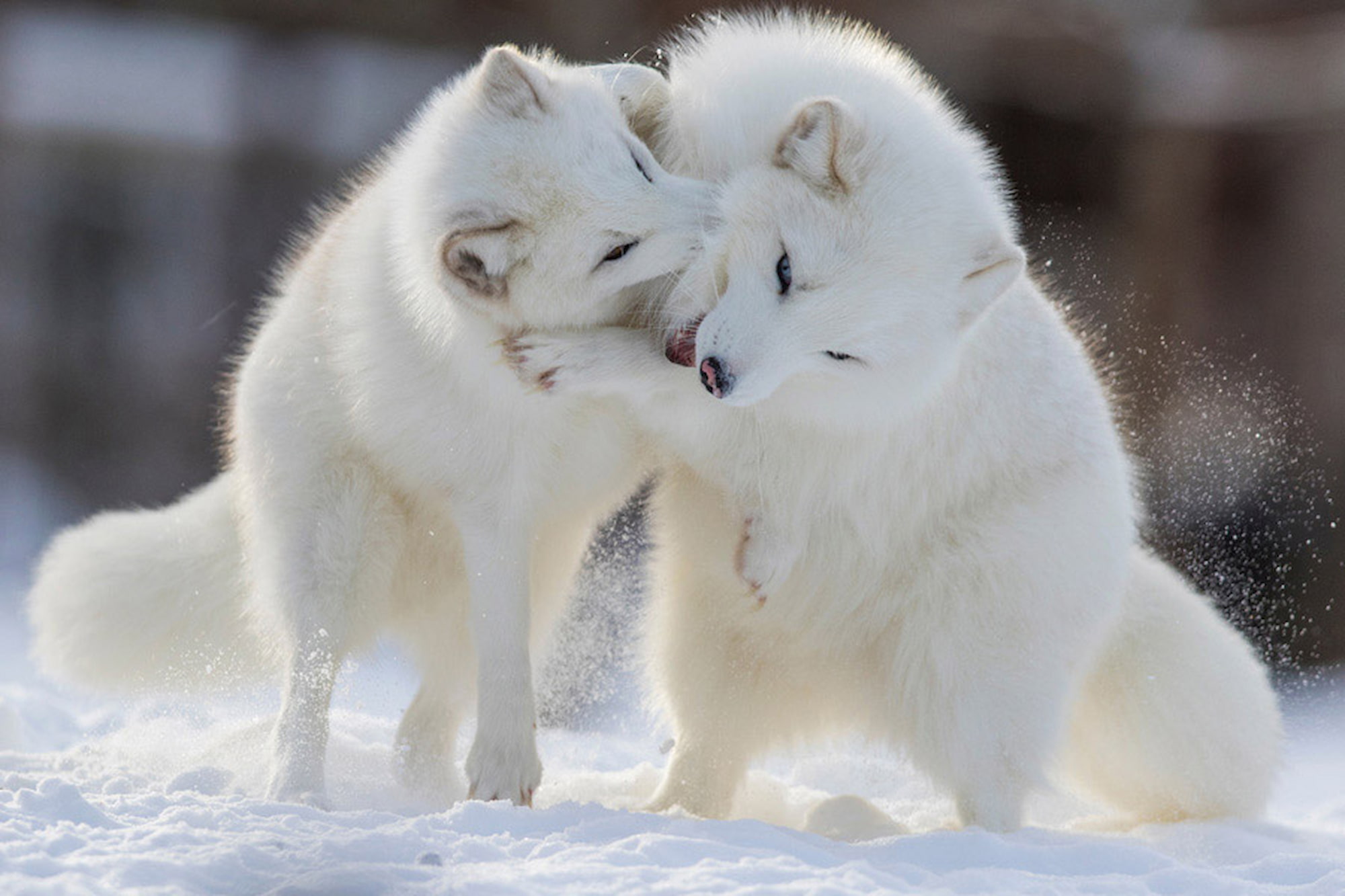
Nature’s snow-white trickster: the Arctic fox at play.
The Arctic fox is a true survivor. Despite the freezing conditions of the Arctic, this small fox - the smallest canine on earth - thrives year-round in the far north of our planet. Its white winter coat offers perfect camouflage in the snow, while its brown(ish) summer fur blends into the tundra. You can often find these clever creatures scavenging in Greenland, Iceland, and Norway, where they prey on small animals like birds and lemmings, the most abundant rodent in the Arctic.
Winter months (October to March) provide the best opportunities for seeing them in their stunning snow-white coats, although the irony of how difficult it is spotting anything in the Arctic darkness is not lost on us. Instead, keep your eyes peeled on the snow during your Arctic cruise, in the early morning and around sunset.
To improve your chances of seeing Arctic foxes, visit the tundra regions of Iceland or Norway, where they are commonly seen.
Where to see them: Greenland, Iceland, Svalbard, Canadian Arctic, Russian Arctic…basically all over the region!
“Cruising by zodiac along the sea cliffs in Svalbard is also a great place to spot the Arctic fox, dashing along these steep rocks slopes looking for bird eggs - although you have to look carefully, they are masters of camouflage!” - Tara Sutherland, Viva Operations Manager
3. Walrus
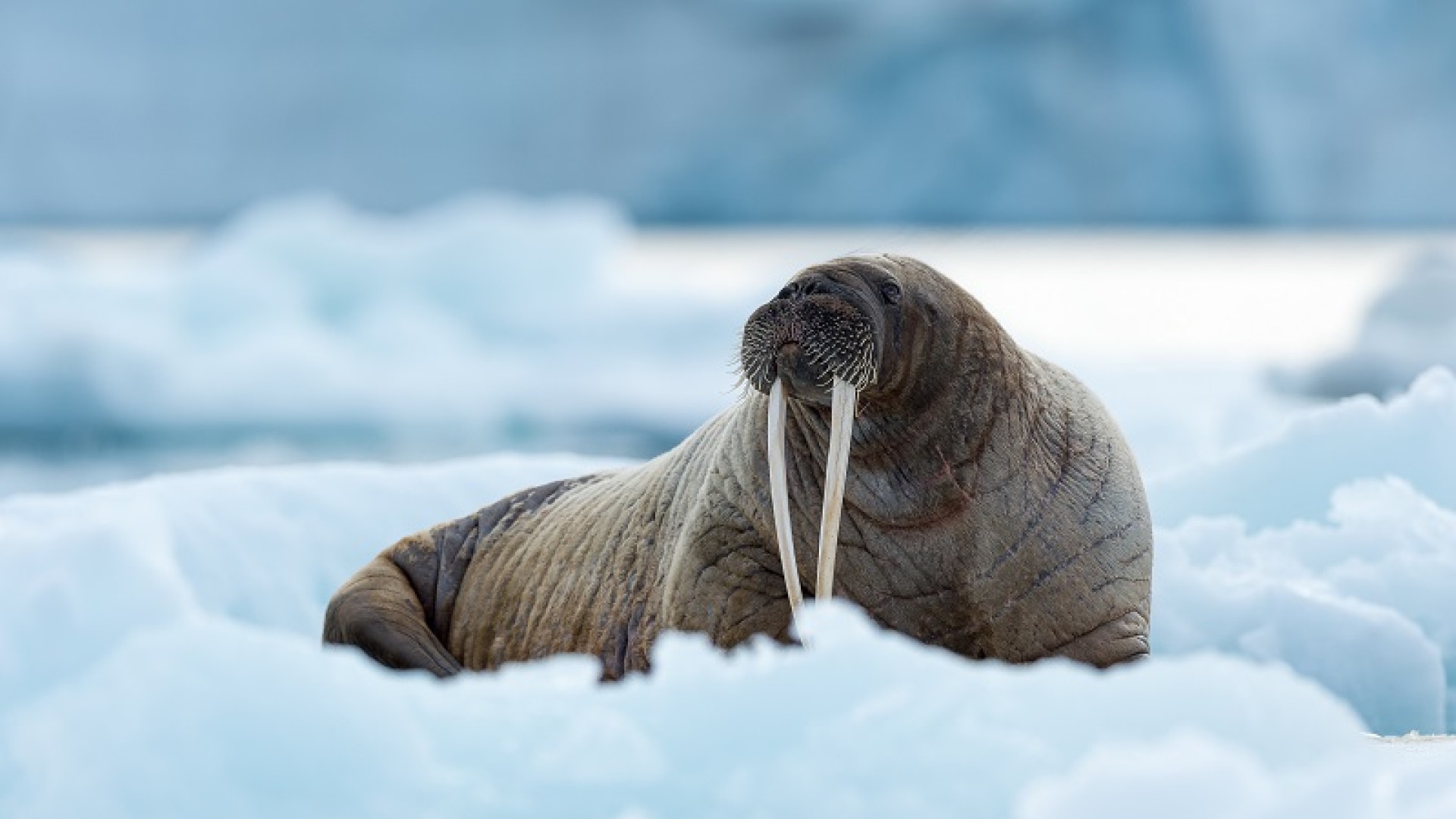
Mighty in size, gentle in nature—Arctic walrus.
Walruses are famous for their long tusks, whiskered faces, and abundance of blubber. Not that we're body shaming!
These super social beasts are typically spotted in large groups, known as herds, lounging on ice floes or gathered along rocky coastlines. They are often seen off the coasts of Svalbard, Greenland, and northern Canada. The best time to see them is during late summer when the ice recedes, and they haul out on shorelines to rest and socialize.
An Arctic cruise to Svalbard offers an unforgettable opportunity for those hoping to see wildlife in the Arctic and witness walruses en masse.
Where to see them: Greenland, Svalbard, Russia Far East (Chukotka), Franz Josef Land, Canada, Alaska.
“I spent an hour on a beach in Svalbard observing a herd of walruses taking an afternoon nap, sneezing, pushing each other for space, and keeping a watchful eye on us at the same time. What a privilege to be in the presence of these fascinating mammals.” - Tara Sutherland, Viva Operations Manager
> Read more: When to Cruise to the Arctic
4. Narwhal
Don't believe in Unicorns?
Then how do you explain this!?
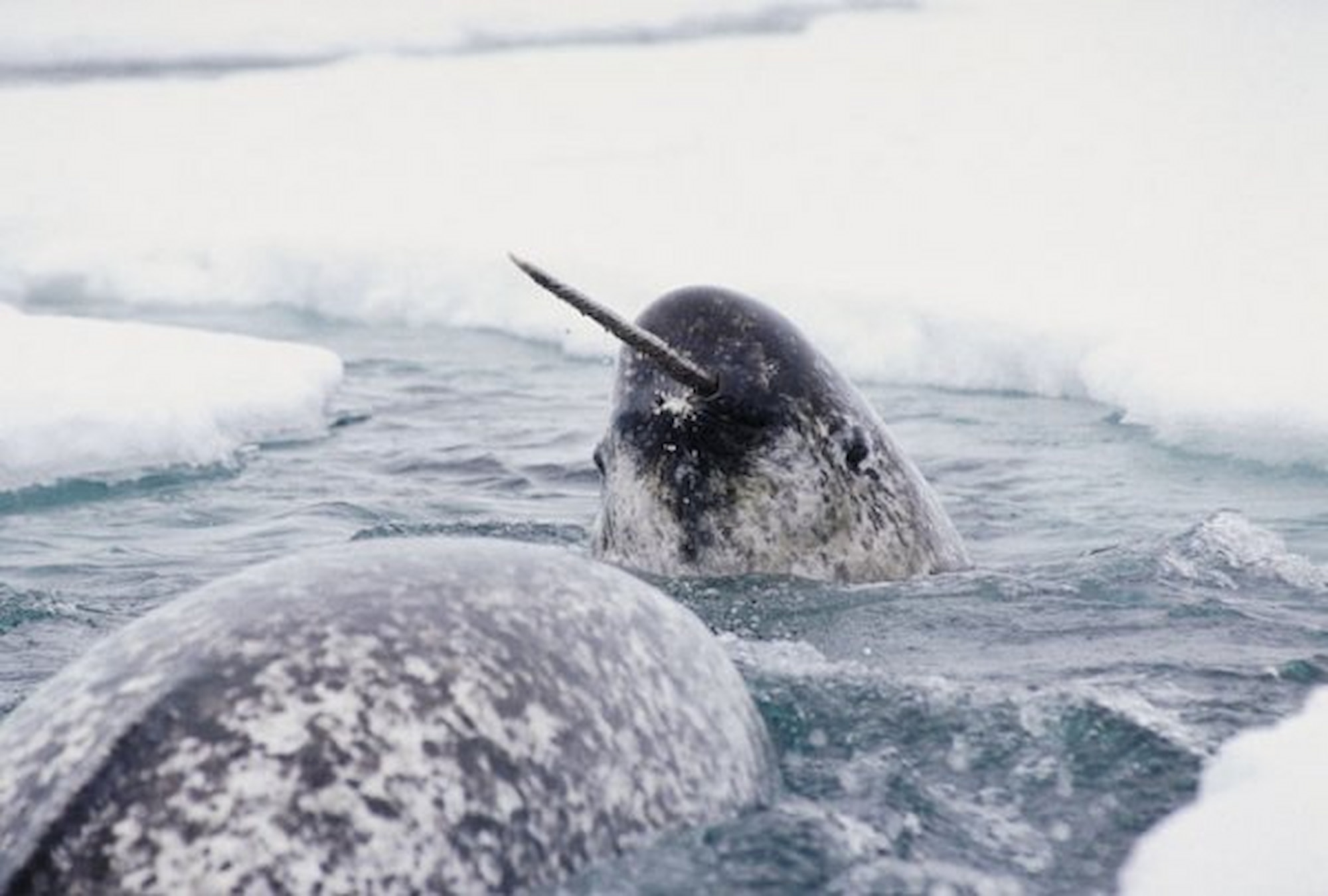
Mystical unicorn of the Arctic’s frozen seas.
The narwhal is a mesmerising creature, one of the most distinctive Arctic wildlife, and possibly the hardest to spot. Its long, spiral tusk can grow up to 10 feet and is actually an elongated canine tooth. These elusive whales - whose closest relative is the beluga - are found in waters off northern Canada and Greenland. Narwhals are migratory animals, and the best time to see them is between May and August, when they travel closer to shore in search of a tasty morsel. And in case you’re wondering: no, narwhals do not feed by stabbing prey with their unicorn-tusks!
To up your chances of seeing narwhals, take a cruise to the Canadian Arctic or Greenland, where they can be spotted in fjords and coastal waters.
Where to see them: The narwhal is definitely elusive, but you could try Greenland, or more likely the Canadian Arctic which is home to about 75% of the world's population.
5. Beluga
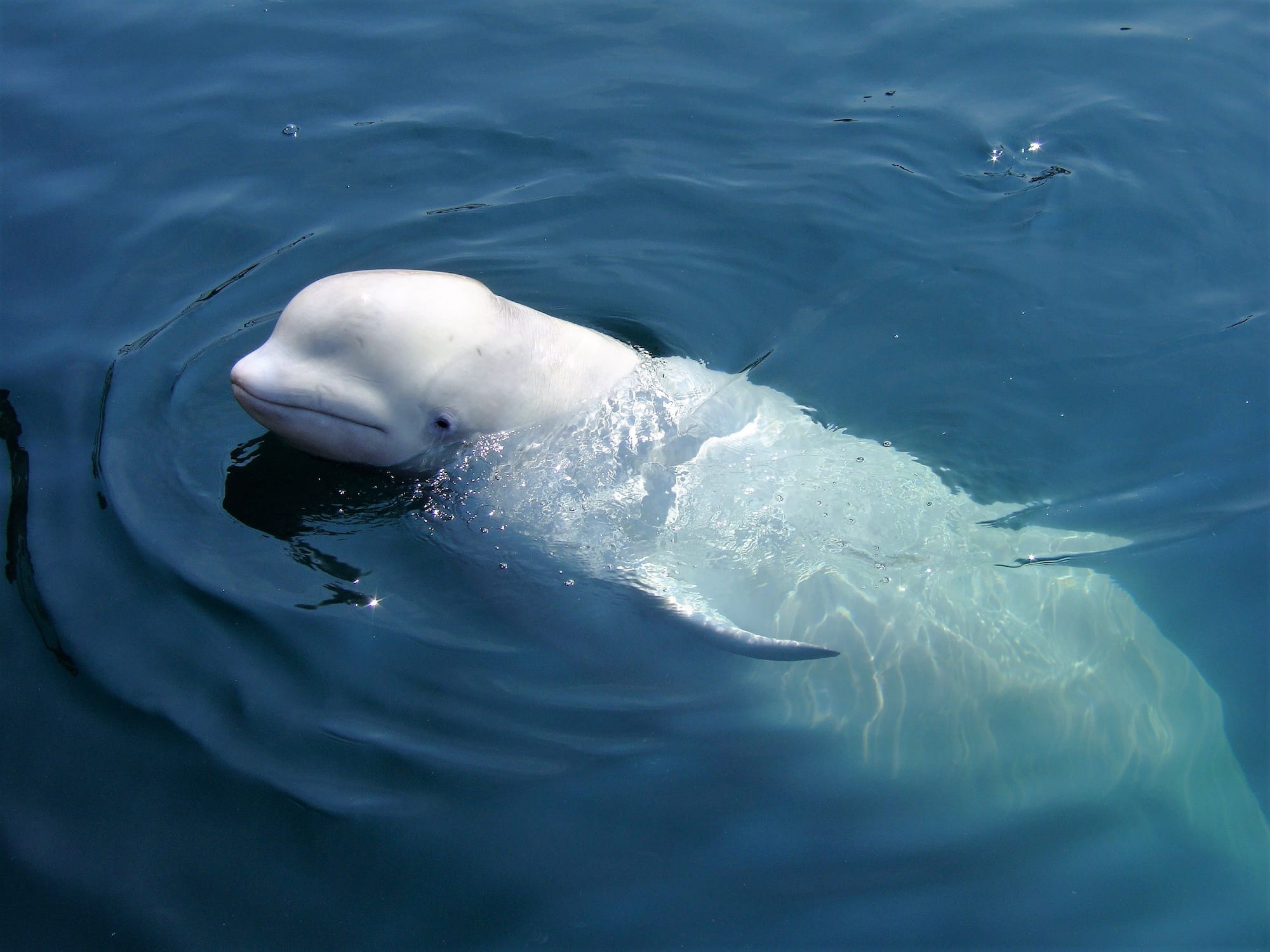
Beluga thriving in the frozen Arctic seas
Beluga whales are known for their striking white colour, playful nature, and fondness for "singing" – and also, maybe espionage (but we’re not 100% sure about that one!)
Often called the "canaries of the sea" for their wide range of vocal sounds, belugas are highly social animals and can be spotted in large pods. They inhabit the shallow waters around northern Canada, Russia, and Svalbard, with the best viewing chances during the warmer months from June to August, when they migrate into coastal areas.
An Arctic cruise around the coasts of Svalbard or northern Canada, especially Churchill River, gives you the best chance to see beluga whales up close, and some tours even offer the opportunity to kayak or take zodiac boats for a closer look.
Where to see them: Northern Canada and Svalbard offer excellent chances to spot belugas.
“I have managed to catch some glimpses of belugas swimming around an island off Spitsbergen, they were playing a little in the waves of our zodiac, but in general pretty shy and they mostly stay just under the water, almost like they were teasing us!” Tara Sutherland, Viva Operations Manager
"Spotting Beluga whales ahead of the ship on our expedition around Svalbard was incredible, although there were a few moments of wondering if they were just icebergs floating in the water, or were they really Belugas popping up, and various jokes among fellow passengers as we all stood there with our binoculars calling out “there they are! …oh no, wait, that’s just a bit of ice”, until we eventually realised that the white blobs were really a pod of Belugas playing in the distance." - Rosemary McNoe, Viva Business Development Manager
6. Reindeer
Caribou or Reindeer
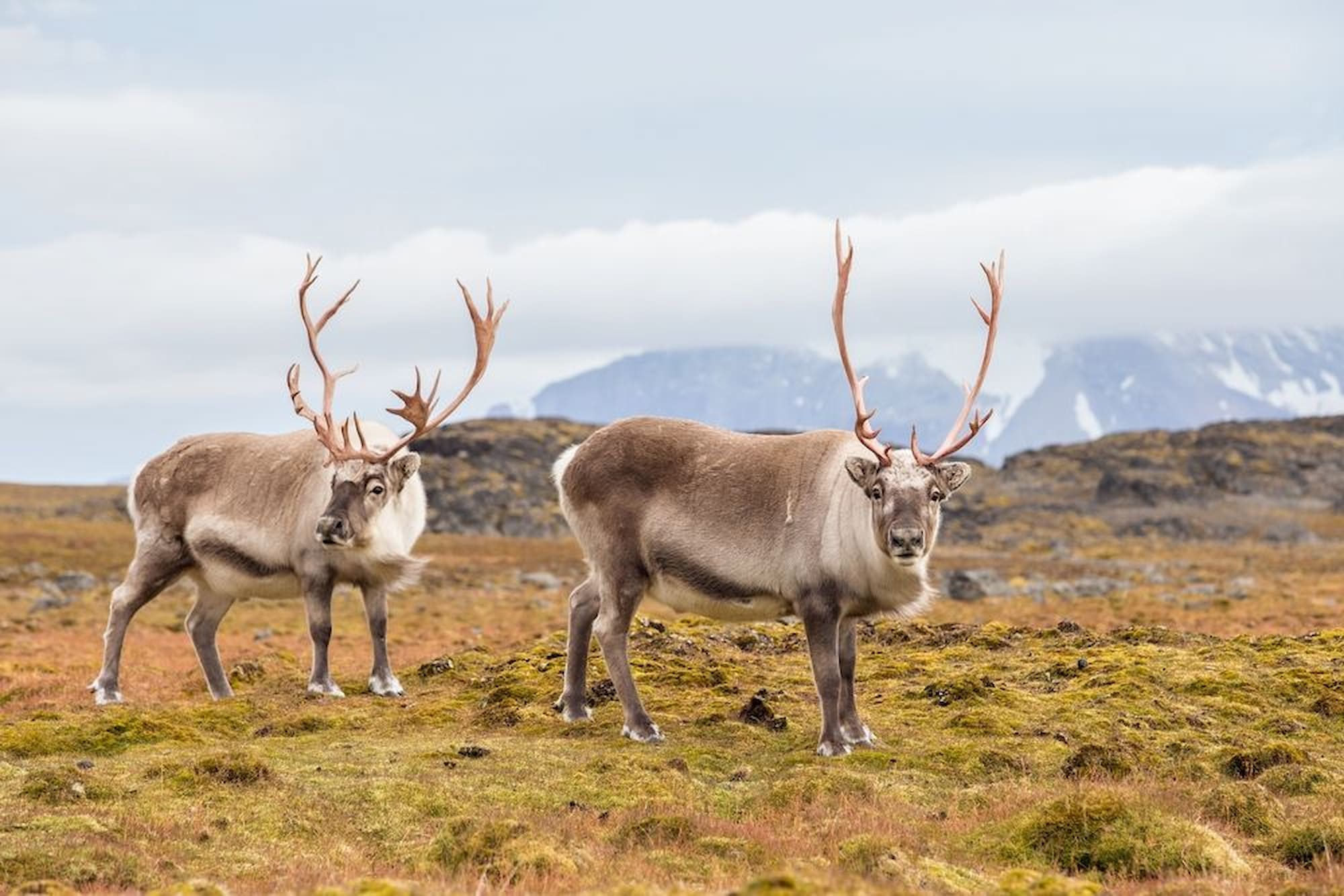
Rudolph’s Arctic cousins at home.
Wild reindeer are the majestic nomads of the Arctic tundra - famously covering staggering distances every year in search of food and a safe place for calving. Commonly known as caribou in North America (where reindeer are specifically only domesticated caribou), these intrepid explorers live in humongous herds, often numbering in the tens of thousands.
Like the polar bear, which has become the reluctant poster child for climate change threats to the Arctic region, the reindeer is the Arctic wildlife species that has suffered the most in recent years. In the early 2000s, one of the largest known herds - the Western Arctic Caribou Herd - comprised almost half a million members. However, that number has been greatly decimated in the last two decades. Unfortunately, it is not the only herd to have suffered such a dramatic decrease in size.
During the summer, reindeer can be seen in large herds grazing on the tundra in Svalbard, Greenland, and Norway. The best time to see them is between June and August when they are most active and on the move in search of fresh vegetation.
Where to see them: Norway, Svalbard, and Greenland are well-known areas for reindeer sightings.
“Early July proved to be a great time of year to enjoy Svalbard, with wildflowers blooming, and reindeer grazing on the new growth." - Tara Sutherland, Viva Operations Manager
> Read more: Great Polar Cruise Experiences
7. Arctic Hare
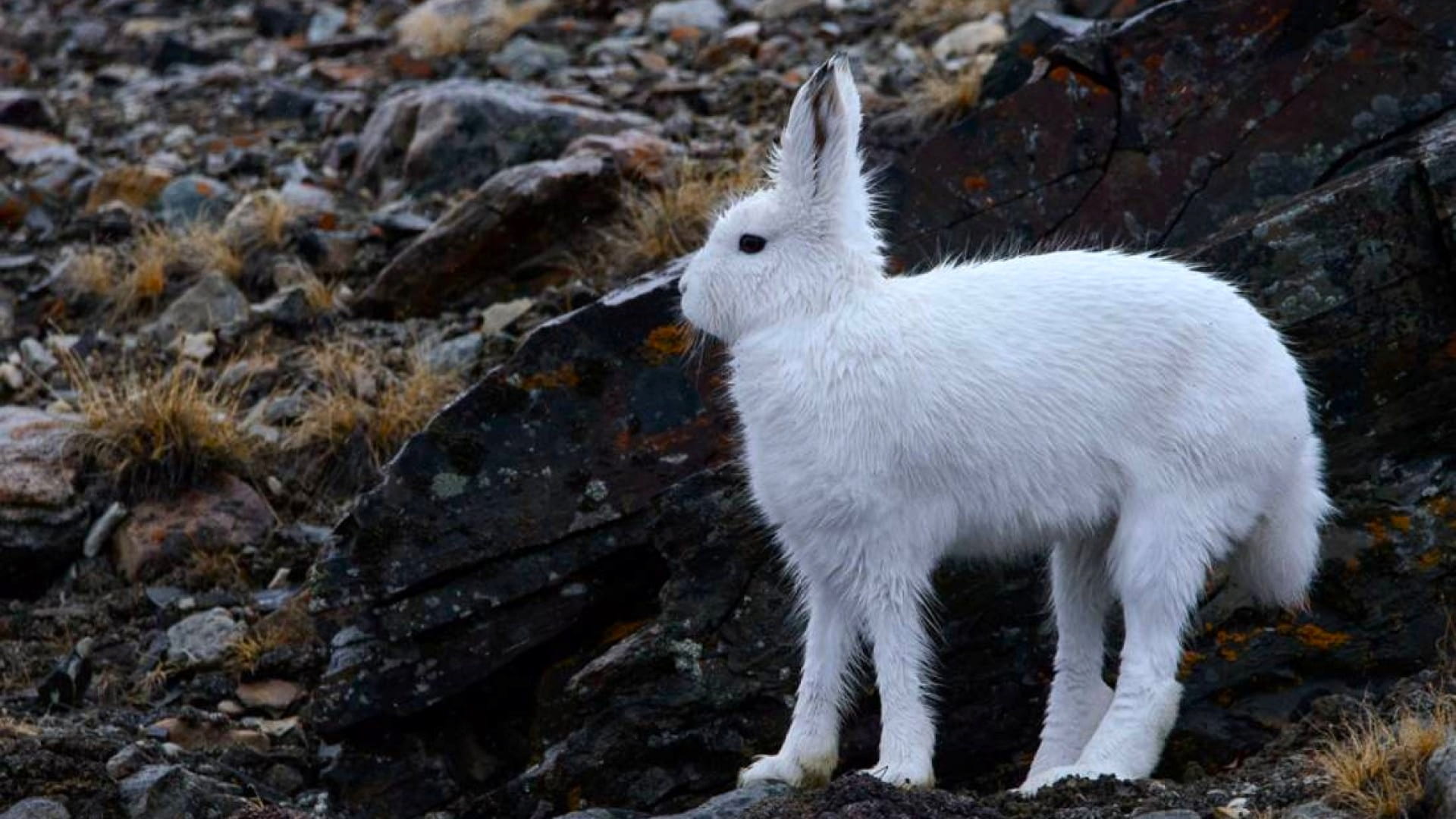
Snow bunny on the run!
The adaptable (and adorable) Arctic hare can be spotted throughout the tundra regions of Greenland, Canada, and Iceland. However, your eyes had better be on the job - this small and speedy Arctic wildlife can sprint up to 60 km/hr (37 mi/hr!). Mind you, there's no need to break into a sprint if you spot one - these are not particularly timid animals and appear more curious than afraid.
Arctic hares are built to withstand bone-snapping temperatures, these hares have thick fur and strong hind legs for bounding across the snow without getting hopelessly stuck.
To see these fascinating creatures, visit Greenland (where the animal is known as ukaleq, also a popular first name, funnily enough) or northern Canada, where they thrive year-round.
Where to see them: Greenland and Canada are prime areas for spotting Arctic hares.
8. Puffin
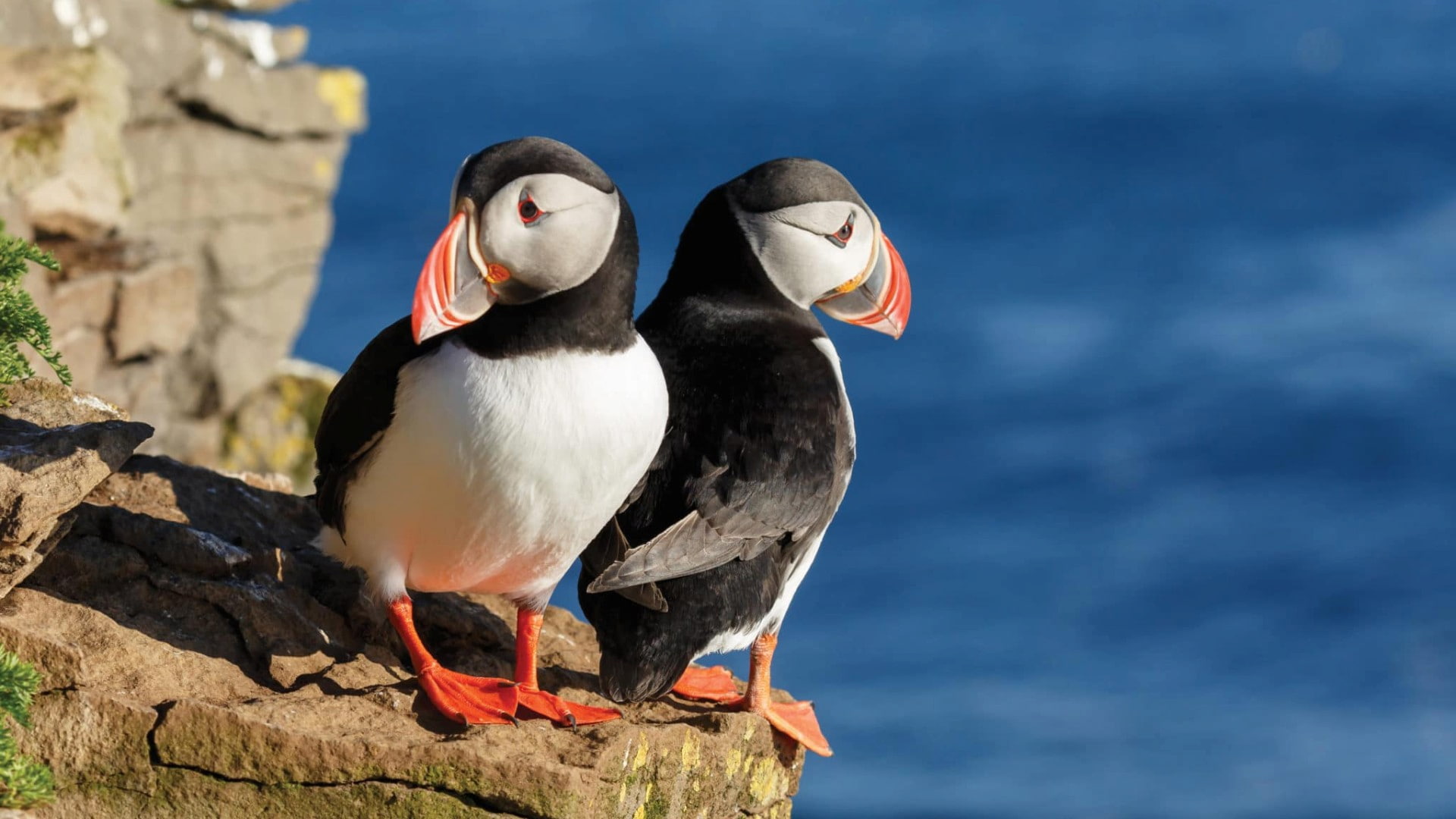
Colourful Arctic puffins in their natural habitat.
With their bright beaks and clumsy cruising, puffins are some of the most beloved birds in the Arctic. They nest in huge colonies on cliffs and coastal areas, with Iceland, Greenland, and the Faroe Islands being some of the best places to spot them. The breeding season, from May to August, is the prime time to see puffins as they come ashore to nest and raise their young.
A cruise to Iceland during the summer breeding season is your best chance to witness puffins in their natural habitat.
Where to see them: Iceland, Greenland, and the Faroe Islands are known for their large puffin colonies.
“Everyone wants to see these clowns of the sea, and even though there are not the large colonies of them on Svalbard (like there are in Iceland and other places), our expedition team took us to an area where they knew they like to nest, so we got the chance to watch puffins doing their thing - it certainly left big smiles on everyone's faces!” - Tara Sutherland, Viva Operations Manager
>Read more: Tara's Arctic Cruise Photo Journey
9. Musk Ox
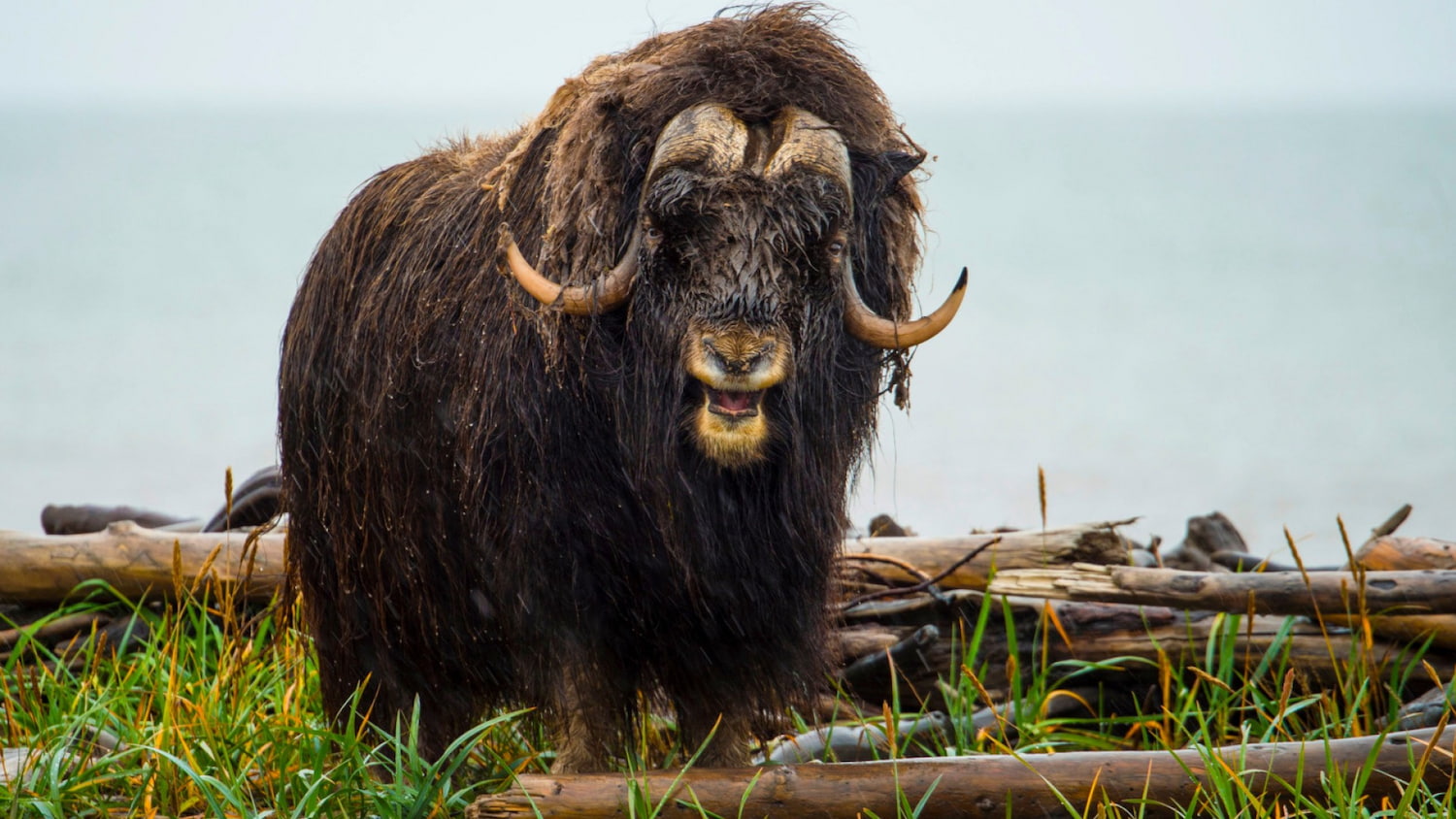
Woolly wonders of the frozen tundra.
Musk oxen are ancient animals that have survived through the last age alongside wild reindeer. Safe to say, they've had plenty of time to become well-adapted to the harsh conditions of the Arctic tundra. These large, shaggy herbivores can be found in Greenland, northern Canada, and Alaska. They are often seen grazing on the tundra during the summer months, but their thick, woolly coats keep them warm even in winter. Summer is the best time to see them, as they graze in large herds across the Arctic tundra.
Where to see them: For those hoping to see musk oxen, head to Greenland or northern Canada during the summer, when they are more visible. There are also some reintroduced herds in Alaska.
10. Snowy Owl
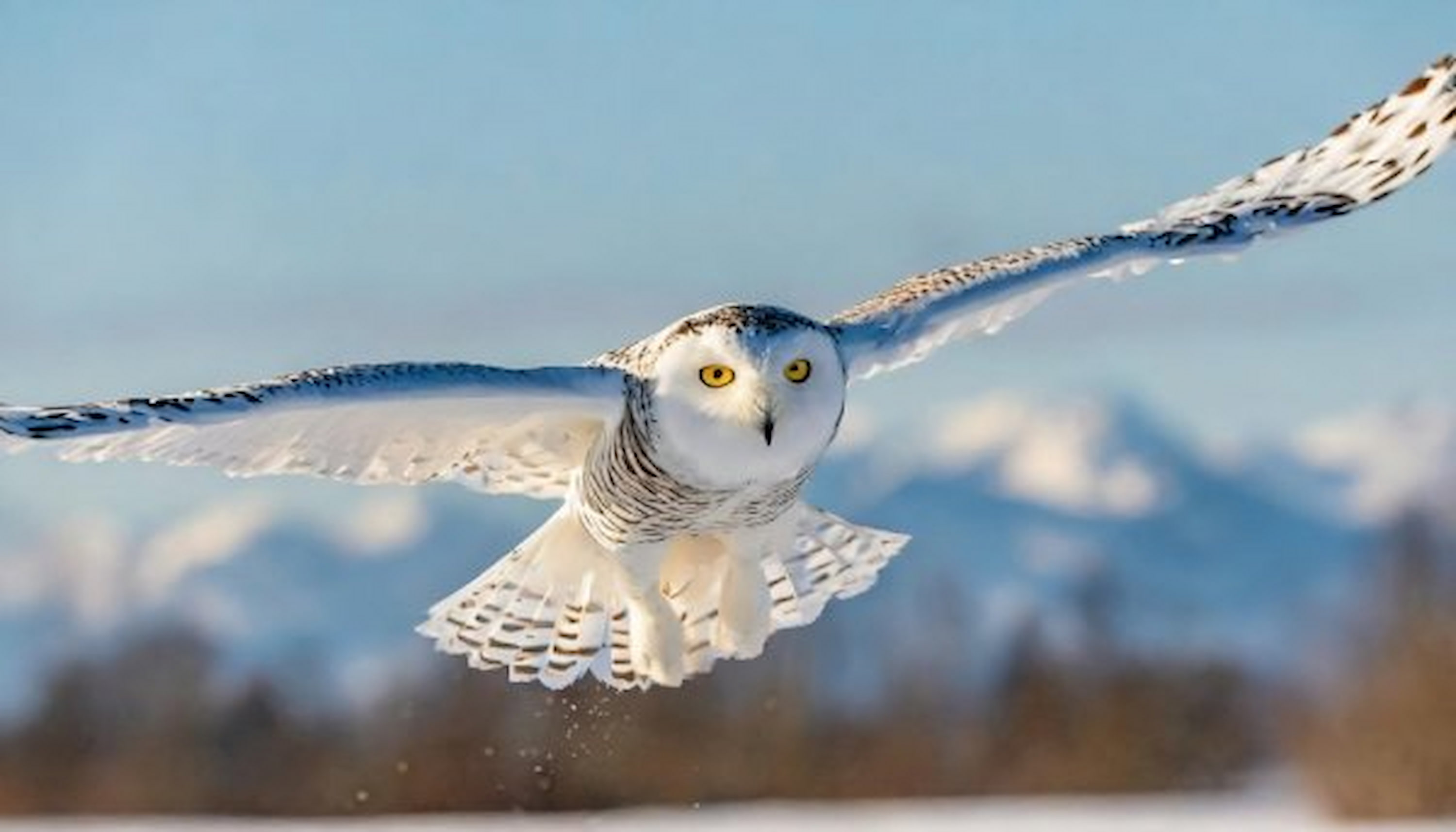
Arctic owl surveying its snowy domain.
The snowy owl, with its striking white feathers and piercing yellow eyes, is one of the Arctic's most regal birds. These owls are most commonly found across the tundra regions of Canada, Alaska, and Siberia, hunting small mammals like lemmings. Winter and early spring provide the best opportunities to see them, as their bright white feathers stand out against the snow.
To spot a snowy owl, visit the tundra regions of Canada or Alaska during the colder months.
Where to see them: Canada, Alaska, and Siberia are the most common places to see snowy owls.
From polar bears to puffins, the Arctic is a surprisingly rewarding destination for wildlife lovers. Granted, you might not see animals abundantly, nor all that easily, but that is all part of an adventure-filled expedition cruise to the far north.
Itching to take on the challenge and see wildlife in the Arctic?
Embark on an epic Arctic cruise with Viva Expeditions, and come meet some of the hardiest and most unforgettable wildlife on earth.
To know more, contact our Destination Specialists today.
Tara Sutherland
Tara Sutherland is General Manager at Viva Expeditions and has travelled to all seven continents—including standing at the North Pole and sitting in a snowstorm surrounded by curious penguins in Antarctica. With a lifelong love of wild places and epic adventures, she’s explored everywhere from the beaches of South Georgia to the pack ice of the Arctic. Tara now leads the Viva team, sharing her passion for polar travel and helping shape experiences that leave a lasting impression. She believes the polar regions are some of the most awe-inspiring places on Earth—and she’s not wrong.
|
